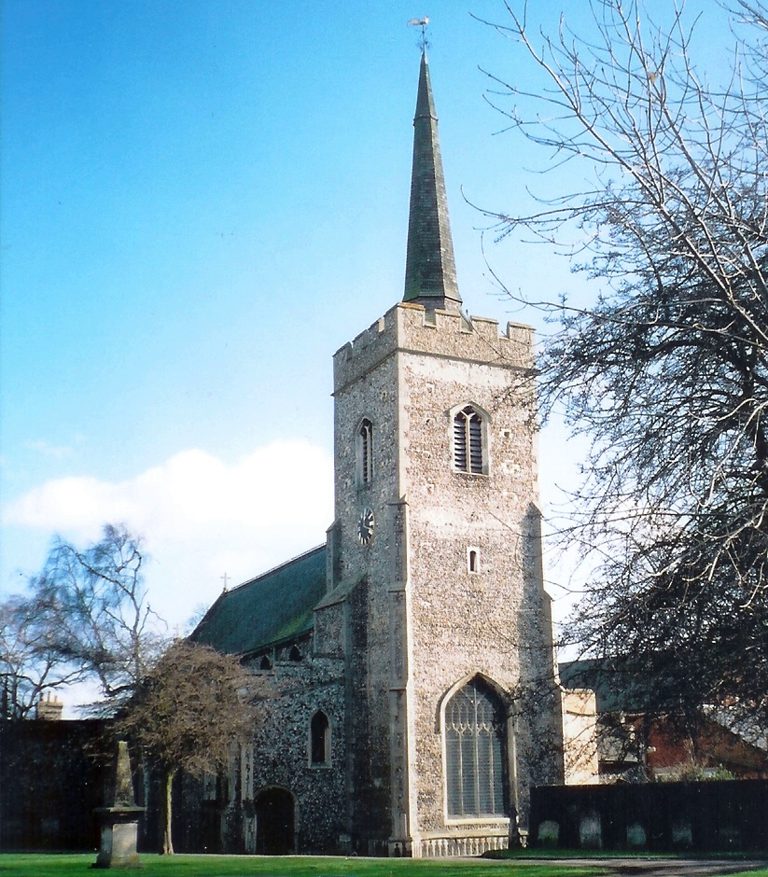Sometimes, once-accepted ideas and actions from earlier periods of history can seem very strange to our modern minds. It is often hard, in today’s context, to grasp earlier people’s thinking and motivations. For example, we are all familiar with the idea of a hermit, even if they are quite rare today. Such a person chooses to live separately, without comforts and far from others in a wild place. This separation is usually for religious reasons and they still have freedom to wander around the world.
However, how many people today have heard of an anchorite and understand their motivations to live as they did? Anchorites could be male or female but most were women, often called “anchoresses” who were nuns. The most famous of the East Anglian anchoresses was Saint Julian of Norwich. Her writings are still famous and well-read today. .
Newmarket once had its own ‘ankerhold’ cell. It stood outside the east end of St. Mary’s Church in later medieval times, according to local historian, Reverend Canon Peter May. The ankerhold was cleared away in the 19th century, during a Victorian ‘modernisation’ of the church and churchyard. .
Generally, the ankerhold cells were very small, just a few paces in each direction. As seen in the small, medieval manuscript picture, there were one or two windows, sometimes called “squints” in the ankerhold walls, giving the occupant their only views on the world. Typically, one window looked into the church so the anchorite could see into the services and take communion or make confession. The other window looked out onto the world. Here, people could come to get advice from the holy person or ask for prayer. This was also the means by which food and water arrived and waste was passed out. Usually. (not always) there was no door and the walls would not be opened up until one anchorite died and then another person took their place. .
The anchorite needed to have a regular income to support themselves before they were allowed to be enclosed in the cell. They also had to employ a servant to obtain supplies, remove waste etc. Some anchorites sold goods they made or were given donations. .
One anchoress in Newmarket, about whom we know only a little, had come from a wealthy family. She had inherited at least one saffron field near Saffron Walden. Yellow saffron comes from the stamens of a particular variety of crocus flower. It was an expensive and sought-after spice which could produce yellow dye. Even today, saffron is not cheap. .
So why would people get walled-up for life in this way? It was a decision of their own faith – an almost total withdrawal from ordinary life and a commitment to spend as much time as possible with God alone, praying and studying.
.
Anyone taking this decision faced a long inquiry by the Church to make sure they were doing the right thing for themselves. It is no light thing for a young man or woman to be walled-in for life but they also aided their wider community by praying for others, for the Church, the country and the wider world. Distressed souls, whatever their rank or means, could ask for wisdom, encouragement and friendship from the anchorite. .
See more local history at newmarkethistory.org.uk or come and visit us. November 18th Meeting at 7.30 pm in ‘The Stable’, Newmarket High Street, Visitors welcome (£3 fee). Members free. This meeting is a short AGM & a short Talk, “The Burwell Barn Fire 1725, Revisited” (postponed from September).
History
The Newmarket Anchorites

